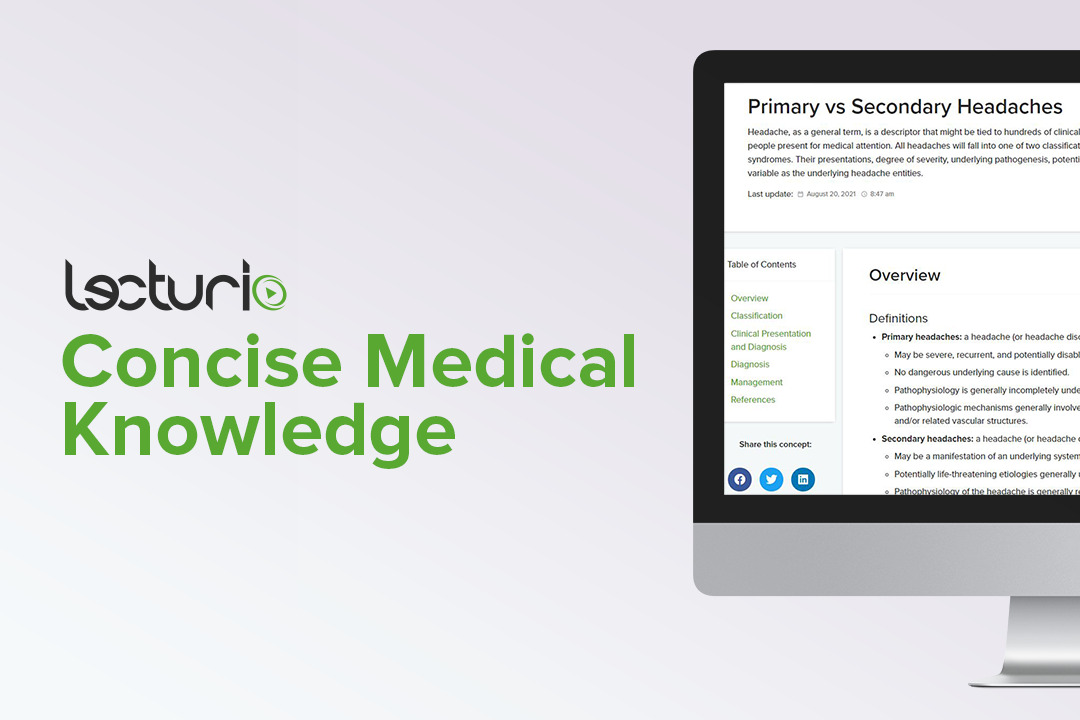Playlist
Show Playlist
Hide Playlist
Case: 68-year-old Man with Squamous Cell Carcinoma
-
Slides Headaches Neuralgiform Headache.pdf
-
Download Lecture Overview
00:01 In this lecture, we're going to learn about neuralgiform causes of headache. 00:06 Let's start with a case. 00:08 This is a 68-year-old man with squamous cell carcinoma of the head and neck who's previously received chemoradiotherapy and underwent total laryngectomy for management. 00:19 He presents with several months of diffuse bilateral headache. 00:24 No throbbing, aching, or stabbing. 00:26 He describes this as a burning pain that is electric and shoots down over the right side of the face, cheek, and jaw. 00:35 The pain can be initiated with chewing. 00:38 On exam, his status post-laryngectomy, but there are no other neurologic abnormalities. 00:44 So what's the headache syndrome in this patient? Well, there's some really key clinical descriptions here that points us towards a neuralgiform headache. 00:54 This patient describes burning pain, that electric shooting sensation that runs along the trajectory of the trigeminal nerve. 01:02 The trigeminal nerve has three branches, the upper face, the middle check, and the lower jaw; and this pain shoots along each of those regions and that's what we see with neuralgiform headaches. 01:15 There's some key associated symptoms that we need to be mindful of here and this pain is initiated with chewing, that sensory feedback of chewing results in activation of this aberrant trigeminal nerve and induces this patient's pain, also a feature of neuralgiform headaches. 01:32 So is this a primary or secondary headache? Well, this is a secondary headache syndrome until proven otherwise. 01:39 This means we need to evaluate for potential causes of this patient's headache at the same time as or before initiating treatment. 01:48 So what is the treatment for this headache? Should we prescribe narcotics for symptom relief? Perform MRA or CTA to evaluate for aneurysm? Start verapamil for headache treatment? Or refer to ophthalmology? Well, prescribe narcotics is something we can do, it's considered for patients with bone metastasis or cancer pain. 02:10 But this pain is different from what we would see from either a metastasis or cancer related pain, this neuralgiform quality suggest an underlying neurologic etiology that requires further workup first. 02:23 We wouldn't start verapamil for this patient, that's the treatment for migraine prevention. 02:27 This patients really needs evaluation for a neuralgiform etiology of his head pain. 02:33 Referral to ophthalmology is something we do for patients who have headache with vision changes, but this patient's symptoms are inconsistent with that. 02:42 This suggests neuralgiform pain and requires vascular imaging for possible vascular compression of the trigeminal nerve. 02:49 So, in this case, performing MRA or CTA would be the first step in evaluating managing this patient. 02:56 The neuralgiform quality suggest either aneurismal compression of the trigeminal nerve, the patient could have a dural-based metastasis from the squamous cell carcinoma or perineural invasion, growth of that squamous cell carcinoma along the trigeminal nerve causing this patient's pain and angiography would be one of the initial steps we'd consider to evaluate for a vascular etiology.
About the Lecture
The lecture Case: 68-year-old Man with Squamous Cell Carcinoma by Roy Strowd, MD is from the course Headache.
Included Quiz Questions
What is the most likely diagnosis in a 60-year-old man with a clinical history of severe shooting pain on the right side of his head and face that is unilateral and paroxysmal?
- Trigeminal neuralgia
- Temporal arteritis
- Cluster headache
- Tension headache
- Migraine headache
What is the appropriate imaging test to evaluate for a cerebral aneurysm?
- MR angiography
- Non-contrast CT
- Lumbar puncture
- Carotid ultrasound
- Electroencephalogram (EEG)
Customer reviews
5,0 of 5 stars
| 5 Stars |
|
5 |
| 4 Stars |
|
0 |
| 3 Stars |
|
0 |
| 2 Stars |
|
0 |
| 1 Star |
|
0 |




